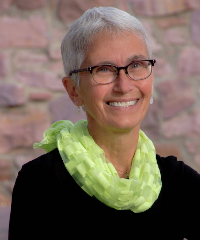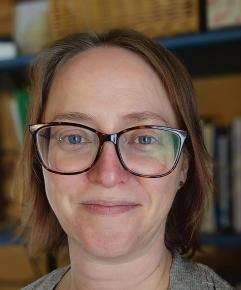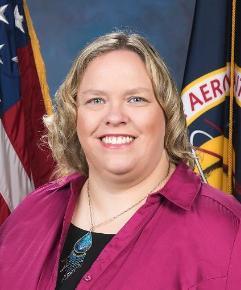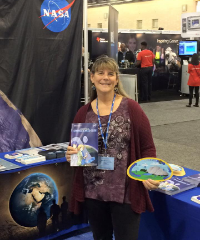Community Blogs
Community Blogs
Discover how the GLOBE community is engaging in all things GLOBE through the community blog posts below.
Learn how to create a GLOBE community blog post.
Filter By:
Blogs List
The Problem
You've got a list of AOI coordinates. Google Maps will show them to
you, but it won't tell you the best order to visit them. If you’ve got
more than a few points, this becomes a mess—guesswork, wasted time,
and unnecessary backtracking.
We need a tool that will plan the most efficient route for us instead
of figuring things out ourselves. That’s what this does, here’s how:
The Solution
This problem is a textbook example of the classic Traveling
Salesman Problem (TSP): How can we find the shortest route
that visits each location (in our ...
Read More »
Posted in:
Curriculum:
TECHNOLOGY
STEM
GLOBE Science Topics:
EARTH AS A SYSTEM
Investigation Areas:
EARTH AS A SYSTEM
Discover the Wonders of the World’s Forests!
Greetings, middle and high school educators! Are you ready to bring
the wonders of forests into your classroom? Dive into this blog series
that bridges the resources of Natural Inquirer and the GLOBE Program,
designed to inspire curiosity, scientific exploration, and
environmental stewardship among your students.
GLOBE and Natural Inquirer Crosswalk
This series is part of the
GLOBE
and Natural Inquirer Crosswalk Project , which connects the
hands-on science of the GLOBE Program with the captivating research
found ...
Posted in:
Curriculum:
SCIENCE AND MATH
GLOBE Science Topics:
CLIMATE
CLIMATE CHANGE
EARTH AS A SYSTEM
Investigation Areas:
EARTH AS A SYSTEM
PRECIPITATION
AIR TEMPERATURE
SURFACE TEMPERATURE
BIOMETRY (INCLUDING TREE HEIGHT)
LAND COVER CLASSIFICATION
CARBON CYCLE
Primary Audience:
TEACHERS
Teacher's Guide:
MIDDLE: 6-8
SECONDARY: 9-12
Audience
Middle school and high school
Time
Approximately 2 class periods: one for reading the Natural Inquirer
inquiry and reviewing images and charts, and one for using the GLOBE resources.
Day 1 : Dive into The World’s Forests 2 inquiry, exploring
images and data.
Day 2 : Apply your learning with GLOBE resources for hands-on discovery.
Materials
The
World’s Forests 2 (pdf), Inquiry 1
Earth
System Poster learning activities (pdf)
Analyzing
Global Patterns with the Earth System Satellite Images (see ...
Posted in:
Curriculum:
SCIENCE AND MATH
GLOBE Science Topics:
CLIMATE
GLOBE PROTOCOLS
EARTH AS A SYSTEM
Investigation Areas:
PRECIPITATION
BIOMETRY (INCLUDING TREE HEIGHT)
LAND COVER CLASSIFICATION
Primary Audience:
TEACHERS
Teacher's Guide:
MIDDLE: 6-8
SECONDARY: 9-12
Audience
Middle school and high school
Time
Approximately 2 class periods:
Day 1 : Dive into the fascinating world of biodiversity
through reading, exploring images, and analyzing charts.
Day 2 : Apply what you've learned by engaging with GLOBE
resources and interactive tools.
Materials
The
World’s Forests 2 (pdf), Inquiry 2
Earth
System Poster learning activities (pdf)
Analyzing
Global Patterns with the Earth System Satellite Images (see
text for instructions)
Optional: GLOBE Protocols ...
Posted in:
Curriculum:
SCIENCE AND MATH
GLOBE Science Topics:
CLIMATE
EARTH AS A SYSTEM
Investigation Areas:
BIOMETRY (INCLUDING TREE HEIGHT)
Primary Audience:
TEACHERS
Teacher's Guide:
MIDDLE: 6-8
SECONDARY: 9-12
Audience
Middle school and high school
Time
Approximately 2 class periods:
Day 1 : Explore the role of forests in the carbon cycle
through reading and analyzing charts and images.
Day 2 : Engage with GLOBE resources and interactive learning
tools for hands-on discovery.
Materials
The
World’s Forests 2 (pdf), Inquiry 4
Carbon
Travels Game (pdf)
Optional: GLOBE Carbon
Cycle protocols
Optional: My NASA Data pacing guide Trees
and the Carbon Cycle (pdf)
What do the world’s forests have to ...
Posted in:
Curriculum:
SCIENCE AND MATH
GLOBE Science Topics:
CLIMATE
CLIMATE CHANGE
GLOBE PROTOCOLS
EARTH AS A SYSTEM
Investigation Areas:
CARBON CYCLE
Primary Audience:
TEACHERS
Teacher's Guide:
MIDDLE: 6-8
SECONDARY: 9-12
Audience
Middle school and high school
Time
Approximately 2 class periods:
Day 1 : Analyze the Natural Inquirer inquiry, focusing on
charts and text.
Day 2 : Use GLOBE tools to explore real-world data and trends.
Materials
The
World’s Forests 2 (pdf), Inquiry 5
Data
Visualization System
Advanced
Data Access Tool
Steps
in the Scientific Process
How well are we managing our forests worldwide?
Forest managers take many factors into consideration when making
decisions. In recent ...
Posted in:
Curriculum:
SCIENCE AND MATH
GLOBE Science Topics:
CLIMATE
CLIMATE CHANGE
GLOBE PROTOCOLS
EARTH AS A SYSTEM
Primary Audience:
TEACHERS
Teacher's Guide:
MIDDLE: 6-8
SECONDARY: 9-12
Our project for SEES 2024 was "Creating a Model to Identify
High-Risk Areas for Flash Flooding in Houston, Texas." In this
blog, I will discuss how we calculated which areas are "high-risk."
There are many ways to identify the most at-risk points of flooding
in a given region. Such points are commonly identified in a flood map,
such as the one here:
For our project, we decided to look at elevation data, which is
perhaps the most intuitive: water flows downhill and will accumulate
in the lowest regions. To get our elevation data, we used ...
Posted in:
GLOBE Science Topics:
CLIMATE CHANGE
EARTH AS A SYSTEM
EARTH SYSTEM SCIENCE
Investigation Areas:
EARTH AS A SYSTEM
BIOSPHERE
LAND COVER CLASSIFICATION
Primary Audience:
SCIENTISTS
STUDENTS
TEACHERS
Student Research Reports:
MISSION MOSQUITO REPORT
SEES 2024 Experience
Getting the opportunity to participate in the NASA SEES Earth System
Explorers program has positively impacted my educational and career
journey in more ways than I could've imagined. Throughout this
internship, I gained an immense amount of knowledge in Earth science,
utilizing the GLOBE Observer app, ArcGIS, Collect Earth Online,
Python, and many other tools to better understand the environment
around us. During the last few weeks of the program, a team of seven
other interns and I completed our own research project called
"Harnessing ...
Posted in:
GLOBE Science Topics:
EARTH AS A SYSTEM
Investigation Areas:
EARTH AS A SYSTEM
LAND COVER CLASSIFICATION
MOSQUITOES
Primary Audience:
SCIENTISTS
STUDENTS
TEACHERS
Student Research Reports:
MISSION MOSQUITO REPORT
In this blog post, I will go through every step of the internship and
outline my experience!
Before I do that, first of all, I would like to say that I am so
happy that I got to spend my summer with SEES! This program was so
amazing and helped guide me a bit more on what I want to do in my
future career and in college! I am very grateful for all of our
mentors who guided us through the program and provided great knowledge
and support to all of us! Thank you for this opportunity.
Modules: Climate Science Background and Exploring the Earth
To prepare for the ...
Posted in:
GLOBE Science Topics:
EARTH AS A SYSTEM
Investigation Areas:
EARTH AS A SYSTEM
LAND COVER CLASSIFICATION
MOSQUITOES
Student Research Reports:
MISSION MOSQUITO REPORT
If you had asked me what “citizen science” was before this internship
with the NASA SEES ( STEM Enhancement in Earth Science ) Earth System
Explorers, I most likely would have conjured a description that
involved studying the human body. Now, however, I feel confident in
saying that citizen science is a dynamic, extraordinary meaningful
process by which everyday citizens contribute to real-world scientific
research. This internship allowed me to take on the roles of both a
citizen scientist and a researcher, deeply engaging with my local
community and environment while ...
Posted in:
GLOBE Science Topics:
DATA INCLUDED
EARTH AS A SYSTEM
Investigation Areas:
EARTH AS A SYSTEM
Primary Audience:
PARTNERS
SCIENTISTS
STUDENTS
TEACHERS
Student Research Reports:
MISSION MOSQUITO REPORT
The wildfire data analysis journey began with a dataset comprising
over 1200 points located in the California region. To uncover the
correlation between land cover types and wildfire risk, we first
needed to determine the wildfire risk for each point using the FEMA
Wildfire Risk Map. This step involved entering coordinates into the
software to obtain the wildfire risk index for each location. From
this dataset, we categorized approximately 325 points as having a very
low risk, 350 as moderate risk, and 578 as very high risk for
wildfires. These categories served as the ...
Posted in:
GLOBE Science Topics:
EARTH AS A SYSTEM
Investigation Areas:
EARTH AS A SYSTEM
LAND COVER CLASSIFICATION
Primary Audience:
SCIENTISTS
STUDENTS
TEACHERS
Student Research Reports:
MISSION MOSQUITO REPORT
My group’s project focused on using land cover data and GLOBE
Observer images to create a machine learning model that can predict
land surface temperature - a measure of how hot the surface of the
Earth feels in a given location. For context, GLOBE is short for
“Global Learning and Observations to Benefit the Environment”. It’s an
app that lets volunteers across the world take observations of their
local community (these could be of cloud cover, land cover, or
mosquito habitats) and these observations help scientists track
changes in the environment. It’s part of a wider ...
Posted in:
GLOBE Science Topics:
EARTH AS A SYSTEM
Investigation Areas:
HYDROSPHERE
EARTH AS A SYSTEM
MOSQUITOES
Learning Activities:
EARTH AS A SYSTEM
LAND COVER/BIOLOGY
Primary Audience:
PARTNERS
STUDENTS
TEACHERS
Student Research Reports:
MISSION MOSQUITO REPORT
Background
I received my formal training on GLOBE Atmosphere protocols, particularly cloud observation, in the summer of 2011. In 2016, the GLOBE Program launched the GLOBE Observer (GO) app, designed for volunteer science. The GO app is more user-friendly and focuses on specific observations anyone with a smartphone can make.
The GLOBE Program is structured and education-focused, targeting students and educators, while the GO app is intuitive and accessible to the general public. Both contribute valuable data to the scientific community and enhance public understanding of ...
Posted in:
Curriculum:
SCIENCE AND MATH
TECHNOLOGY
STEM
GLOBE Mission Earth News:
TEACHER STORIES
PROFESSIONAL DEVELOPMENT
STUDENT RESEARCH & ACTIVITIES
GENERAL ACTIVITIES
GLOBE Science Topics:
BACKYARD SCIENCE
CLIMATE
GENERAL SCIENCE
GLOBE PROTOCOLS
EARTH AS A SYSTEM
SCIENTIST SKILLS
Investigation Areas:
ATMOSPHERE
CLOUDS
EARTH AS A SYSTEM
Learning Activities:
ATMOSPHERE AND CLIMATE
EARTH AS A SYSTEM
OBSERVING, DESCRIBING, AND IDENTIFYING CLOUDS
ESTIMATING CLOUD COVER
OBSERVING VISIBILITY AND SKY COLOR
CLOUD WATCH
LEARNING TO USE VISUALIZATIONS
CLOUD FUN
CLOUDSCAPE
TO SPREAD OR NOT TO SPREAD
WE'RE ALL CONNECTED: EARTH SYSTEM INTERACTIONS
RESEARCH: INQUIRE & DISCOVER
DATA COLLECTION: OBSERVE & MEASURE
DATA EXPLORATION: ANALYZE & CHART
SIMULATIONS: PLAY & LEARN
OUTDOOR: EXPLORE & CONNECT
News Topics:
TRAINING
NEWS BRIEFS
TEACHER STORIES
PROFESSIONAL DEVELOPMENT
GENERAL ACTIVITIES
Primary Audience:
ALUMNI
COUNTRY COORDINATORS
PARTNERS
SCIENTISTS
STUDENTS
TEACHERS
TRAINERS
Teacher's Guide:
GRADE LEVELS
MISCELLANEOUS
PROTOCOL INSTRUCTIONS
INTRODUCTION
ATMOSPHERE
SUPPORTING CLOUDS
EARTH AS A SYSTEM
The GLOBE Clouds team is delighted to announce this new section that showcases sky and cloud photographs from around the world! We’ve also been receiving some amazing questions from students.
The featured question was asked by students from Corpus Christi Catholic School :
Question: Why can we see clouds but not evaporation?
Answer: Water vapor is invisible. However, the water in clouds is in liquid or solid state, not gas.
Do you have a favorite cloud photo or a question for the team? Use the linked form to cast your vote and ask us any question ...
Posted in:
Curriculum:
STEM
GLOBE Science Topics:
BACKYARD SCIENCE
CLIMATE
CLIMATE CHANGE
GENERAL SCIENCE
GENERAL SCIENCE @ES
EARTH AS A SYSTEM
EARTH SYSTEM SCIENCE
Investigation Areas:
ATMOSPHERE
EARTH AS A SYSTEM
News Topics:
NEWS BRIEFS
Primary Audience:
ALUMNI
COUNTRY COORDINATORS
PARTNERS
SCIENTISTS
STUDENTS
TEACHERS
TRAINERS
Brad Hegyi is a research scientist for the NASA Prediction of Worldwide Energy Resources (POWER) project team at Langley Research Center in Hampton, Virginia, USA. Brad develops metrics and statistics for POWER from model estimates of future climate to help support planning for future energy use by heating and cooling systems in buildings. Brad also helps create interactive data products to better visualize changes occurring in the climate data.
The energy that comes from the Sun is the basic source of energy for everything on Earth. Solar energy drives Earth’s weather and ...
Posted in:
Curriculum:
TECHNOLOGY
STEM
GLOBE Science Topics:
BACKYARD SCIENCE
CLIMATE
CLIMATE CHANGE
DATA INCLUDED
GENERAL SCIENCE
EARTH AS A SYSTEM
EARTH SYSTEM SCIENCE
SCIENTIST SKILLS
Investigation Areas:
ATMOSPHERE
EARTH AS A SYSTEM
Primary Audience:
ALUMNI
COUNTRY COORDINATORS
PARTNERS
SCIENTISTS
STUDENTS
TEACHERS
TRAINERS
The Sun drives many processes in Earth’s atmosphere. As the Sun rises and sets, it warms the Earth’s surface at different intensities. These changes in heat lead to changes in the clouds, especially the types of clouds. To study these changes, we need observations at different times over the course of hours, days, weeks, months, and years from around the globe. It can be tricky to capture the extent of these interactions with satellites alone, which is why we need observations from your perspective on the ground as part of the GLOBE Eclipse Challenge: Clouds and Our ...
Posted in:
Curriculum:
STEM
GLOBE Science Topics:
BACKYARD SCIENCE
CLIMATE
CLIMATE CHANGE
DATA INCLUDED
GENERAL SCIENCE
GLOBE PROTOCOLS
EARTH AS A SYSTEM
Investigation Areas:
ATMOSPHERE
EARTH AS A SYSTEM
Energy from the Sun warms our planet, and changes in sunlight can also cause changes in temperature, clouds, and wind. Clouds are ever changing and give you clues and information on what is happening in the atmosphere. Eclipses provide a natural experiment, in which the Sun’s light is blocked from Earth for a brief period in time, allowing us to observe the effects of that sudden change. Read the newly released blog post explaining in depth cloud formation and which ones would be impacted by the upcoming total solar eclipse over North America and how the data will be used. ...
Posted in:
Curriculum:
STEM
GLOBE Science Topics:
BACKYARD SCIENCE
CLIMATE
CLIMATE CHANGE
GLOBE PROTOCOLS
EARTH AS A SYSTEM
Investigation Areas:
ATMOSPHERE
CLOUDS
EARTH AS A SYSTEM
Primary Audience:
ALUMNI
COUNTRY COORDINATORS
PARTNERS
SCIENTISTS
STUDENTS
TEACHERS
TRAINERS
My mosquito trap was definitely a rollercoaster, and with this being the last required update, I still plan on seeing how the traps do after the internship finishes since this has been really interesting. To give some background, I set out three traps around 30-40 yards away from each other around my AOI so I could get an idea of how different areas may yield different results. The first trap was in my backyard, the second trap was in a park close to my house, and the third was by a sidewalk (the pictures I use are from the third trap). The only trap I really had to refill with water was ...
Posted in:
GLOBE Science Topics:
EARTH AS A SYSTEM
Investigation Areas:
LAND COVER CLASSIFICATION
MOSQUITOES
Primary Audience:
STUDENTS
TEACHERS
TRAINERS
Student Research Reports:
INTERNATIONAL VIRTUAL SCIENCE SYMPOSIUM REPORT
MISSION MOSQUITO REPORT
My fieldwork to map land via the Globe app led me to understand where I live better. Texas is the second-largest U.S. state by both area and population. There are only four deserts in North America, and Texas is home to the Chihuahuan Desert. Texas Land Conservancy [TLC] works to conserve natural areas, protect the physical and ecological integrity of their wildlife habitat and native plant communities, and provide essential endangered species habitat. Texas boasts nearly 300 native tree species and is also home to 85 species of mosquitoes. My areas of interest (AOIs) spanned Williamson ...
Posted in:
GLOBE Science Topics:
EARTH AS A SYSTEM
EARTH SYSTEM SCIENCE
Investigation Areas:
MOSQUITOES
Student Research Reports:
INTERNATIONAL VIRTUAL SCIENCE SYMPOSIUM REPORT
MISSION MOSQUITO REPORT
One of the things that I find the most inspiring about The GLOBE Program , is the rich collaboration that it enables us to have with each other. Speaking for myself, I now have friends literally all around the globe, because of my engagement and interaction with GLOBE. I thought I would take a little time to write about a very inspiring intergenerational collaboration that I have found particularly enriching.
During the virtual GLOBE Annual Meeting in 2021, I was asked by a participant if we could meet up in a virtual room and chat. I was astonished to meet the extremely vibrant ...
Posted in:
Curriculum:
EDUCATION RESEARCH
LANGUAGE CULTURE AND ARTS
SCIENCE AND MATH
TECHNOLOGY
STEM
Field Campaigns:
GPM
GLOBE International STEM Network (GISN):
GLOBE INTERNATIONAL STEM NETWORK (GISN)
GLOBE Science Topics:
BACKYARD SCIENCE
CLIMATE
CLIMATE CHANGE
DATA INCLUDED
GENERAL SCIENCE
GLOBE PROTOCOLS
EARTH AS A SYSTEM
EARTH SYSTEM SCIENCE
SCIENTIST SKILLS
MEETINGS/CONFERENCES
Investigation Areas:
ATMOSPHERE
HYDROSPHERE
EARTH AS A SYSTEM
PEDOSPHERE (SOIL)
BIOSPHERE
Learning Activities:
ATMOSPHERE AND CLIMATE
EARTH AS A SYSTEM
HYDROLOGY
LAND COVER/BIOLOGY
SOIL
Primary Audience:
ALUMNI
COUNTRY COORDINATORS
PARTNERS
SCIENTISTS
STUDENTS
TEACHERS
TRAINERS
—
20 Items per Page










